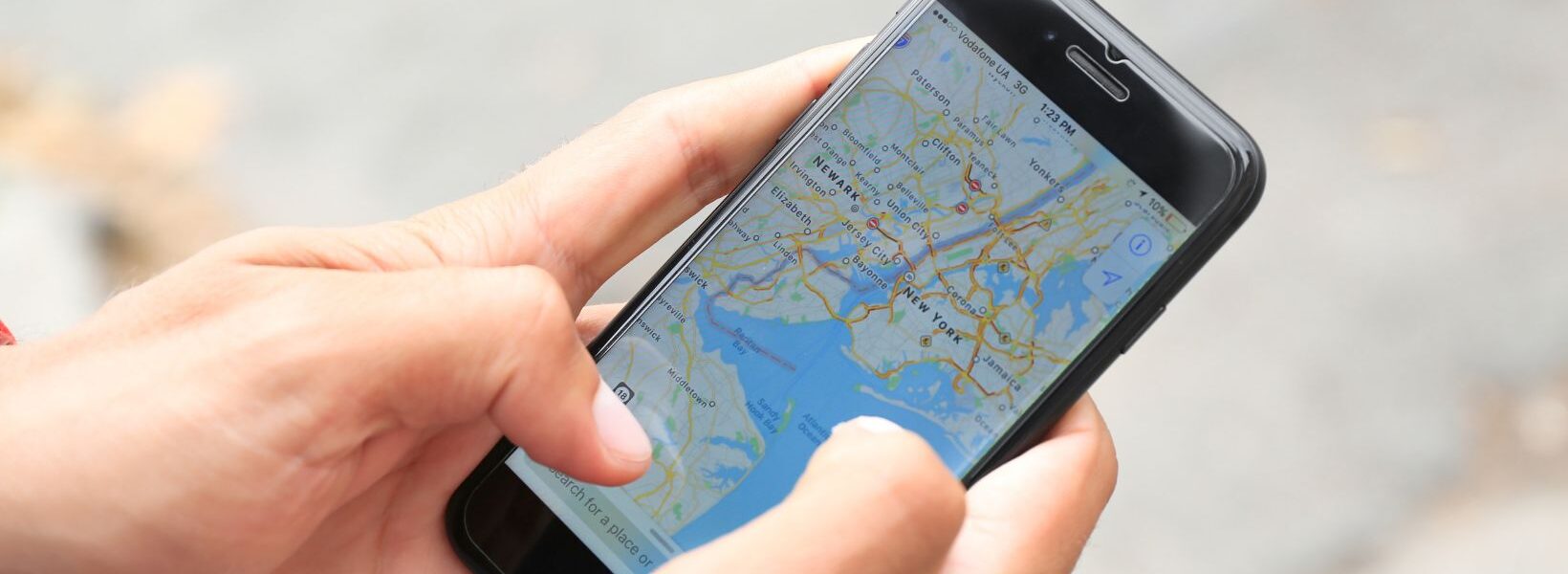Apple Maps has redesigned their interface for iOS 12 and released it for beta testers. The latest update focuses on a cleaner design that makes the app easier to use with new screens, destinations, location sharing features and 3D view of locations.
The “how to use apple maps for navigation” is a blog post by the Apple Maps designers. They walk us through the latest update and how it works.
Apple Maps is a mapping application developed by Apple Inc. is a mapping application developed by Apple Inc. is a mapping application developed by Apple Inc. is a mapping application developed by Apple Inc. is a mapping application developed by Apple Inc. debuted in 2012 and quickly became the default map software for iPhones throughout the world. Its original form was not well-received, and Apple has been steadily updating it for years to bring it back on track. Apple has just released the all-new Maps, a 3D experience with a lot of visual elements, greater accuracy, and a lot of quality-of-life improvements.
CNN Underscored had the opportunity to speak with David Dorn, product lead, and Meg Frost, design lead, at Apple Maps, to learn more about the newest Apple Maps enhancements that you should be aware of. Here’s all you need to know about 3D buildings in cities and easier navigation directions.
For improved navigation and accessibility, we’ve given it a completely new appearance.
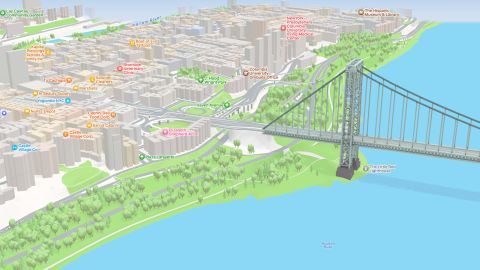
Apple Maps
Apple uses a three-dimensional map that begins with the globe and extends to city streets. And it’s mirrored everywhere, whether you’re driving through New Jersey’s suburbs, crossing the George Washington Bridge into the Bronx, or on a cross-country trip down Route 66. These modern components — buildings, realistic road patterns, and climate-appropriate plants — are put on top of the map, as Dorn and Frost stated.
“We had a two-dimensional product and a flat depiction of the globe before the new map.” “As a result, we took advantage of the chance to construct a realistic globe that appropriately shows the sizes of nations in 3D,” Frost said.
On an iPad, viewing on a larger-screen Apple device provides additional benefits, including new possibilities like exploration and instructional assignments. For some of the cities, you can split the screen and take screenshots to make a virtual tour or follow a guide. Flyover is a unique function that allows you to take a virtual tour of certain sites, such as the Freedom Tower in New York City or the Golden Gate Bridge in San Francisco. In this mode, it reminds me of Google Earth.
Apple’s design team took the effort to personalize the 3D buildings with lights for a starry night effect, and there’s a nighttime view integrated into 3D. On a 12.9-inch iPad Pro, it looks fantastic.
So, what’s unique about this 3D method atop a precise map? It’s all in the details, after all. When using an iPhone to get someplace, you’ll find that you can see more information regarding road lanes. Lanes are correctly rendered, complete with road markings, and junctions have crosswalks. It not only aids accessibility by ensuring that those aspects are there, but it also helps in determining which lane you need and how to get there appropriately. Even better, while traversing complicated highways with intersecting ground-level lanes and overpasses, you’ll notice accurate elevation.
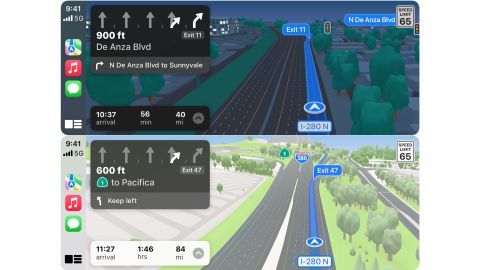
Apple
Since the release of iOS 15 in September, it’s been available on the iPhone for navigation by auto, bike, foot, and transit, but now it’s finally coming to CarPlay. The enhanced contextual factors, together with road data, result in a smoother navigation experience with fewer erroneous turns and yelling at the GPS.
“Drivers can grasp a complicated junction at a look faster than ever before,” Frost added. “And that information helps in making that split-second judgment about which turn they’ll take.” As a result, we want it to be both safer and aesthetically pleasing to use.”
For instructional purposes — or simply for enjoyment – detailed landmarks are available.
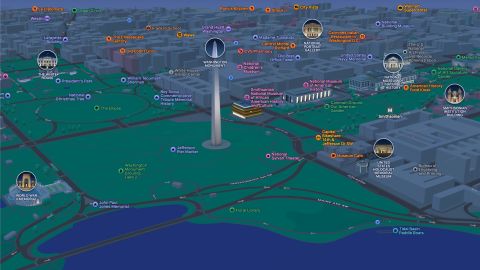
Apple Maps
The most notable aspect of the new Maps, apart from the redesigned appearance of streets and trees — yes, trees — is what Apple refers to as landmarks. While we didn’t discuss it on the call, there has been a lot of talk about Apple adding climate- and environment-accurate trees to their maps. It’s a unique method that gives it an advantage over other mapping providers.
Apple, on the other hand, modeled major structures and components in cities. The team collaborated with locals to choose buildings that would be hyper-accurately depicted. After Dorn’s team chose the landmark, Frost’s crew meticulously constructed it – by hand.
“We choose the level of detail we think is acceptable and produce a 3D mesh of the architectural landmark.” “And then we apply that to the basic map,” Frost continued.

Apple Maps
New York City’s Radio City Music Hall is outfitted with appropriate colored lights. Washington Square Park’s Arch, trees, and pond are immaculate. At the bottom of the Philadelphia Museum of Art, there’s a statue of Rocky. In Washington, D.C., Apple’s recreations of national landmarks and memorials may be utilized in class for instructional reasons on a Mac or iPad.
It’s also a first for big digital maps; Waze and Google Maps don’t go quite as far or as in-depth with 3D recreations of these features.
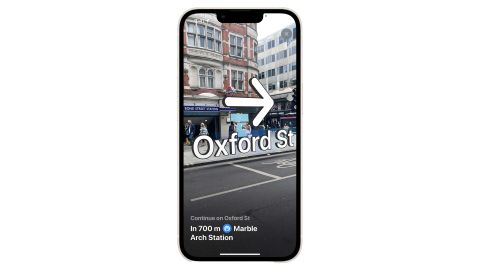
APPLE
With its most recent improvements, Apple Maps has surely earned a better reputation. It’s more accurate, and it received a major update this year, with several helpful features in addition to the large 3D overhaul.
You may use Transit to pin your favorite and most-used lines. You may now rate and review local businesses such as restaurants and retailers. This update displays as a card when you search for a place and tap for additional information. This is one of the most-used parts of Maps, according to Dorn, and it’s evident that this upgrade provides more vital information at once and seeks to make navigating simpler. With a tool called Guides, it also extends to exploration. Apple collaborated with editorial partners to help you get to know a place by recommending activities to do and restaurants to visit.
You can also utilize Apple Maps for a hands-free experience if you have an iPhone and an Apple Watch. When utilizing walking instructions, you can tell whether to turn left or right thanks to haptic stimulation on your wrist, which the watch will softly tap on. Since we’ve started wearing the watch, it’s been one of our favorite features.
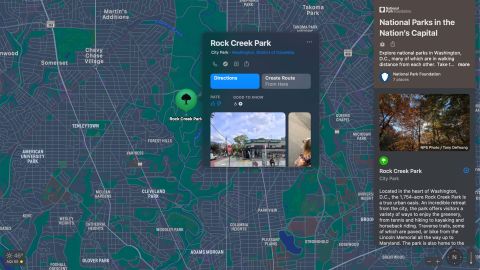
Apple Maps
Frost went on to say that the Apple Watch is a great way to navigate when riding. When travelling on a bike, Apple Maps takes into account elevation, so you’ll have to peddle harder on a hill. And you can have the entire thing on your wrist with haptic feedback so you don’t have to look away from the road.
You can start the navigation voyage from home if you’re using the HomePod Mini, our runner-up selection for a smart speaker. Request a location from Siri, then ask for instructions to be sent to your iPhone, and you’re off to the races. It’s comparable to what a Google Home and an Android phone can accomplish. It’s very useful.
In addition, in several cities in the United States, you may utilize AR walking instructions if you get lost. It’s similar to tracking down a misplaced AirTag in that you point your iPhone about you and it displays arrows, distances, and directions in real time. We’ve tested it a few of times and it does work.
However, the nicest integration is the ability to communicate your ETA with a contact while traveling. It’s included into CarPlay or iPhone navigation, but you can also ask Siri to share it with you. Your position appears in that user’s Maps program, allowing them to track you until you arrive at your destination.

Apple Maps
Dorn summarized the benefits as a three-pronged approach to why Apple Maps should be viewed as a map of choice at the very least. To begin with, Apple is investing heavily on Maps in order to improve it further. It emphasizes privacy by not requiring you to create a separate account and not monitoring your location for data reasons. The third factor is Maps’ design and ecology. This service’s connection with other Apple products and services is a crucial feature.
However, Apple Maps isn’t the only option available to customers. Google Maps and Waze are two popular mapping apps that each have their own set of capabilities. Google’s service is cross-platform and has long provided simple navigation for any method of transportation. Waze, on the other hand, concentrates on the community and helps you navigate traffic in real time. They go beyond typical GPS by enlisting the help of other app users to find other routes. The idea is that there are a lot of people in this area, and they’re all attempting to make a good map with some valuable features.
And, according to Dorn, if Apple Maps is performing its job well, it may relieve the user of a “cognitive burden” and allow them to concentrate on the road. Precise facts and precise settings may undoubtedly assist you in your endeavor.
Watch This Video-
Apple Maps designers walked us through the latest update, which includes a new map style, some features that were missing before and more. Reference: apple maps ios 15.
Related Tags
- how to use apple maps ios 14
- google maps
- apple maps app
- mapquest
- how to use apple maps on android

